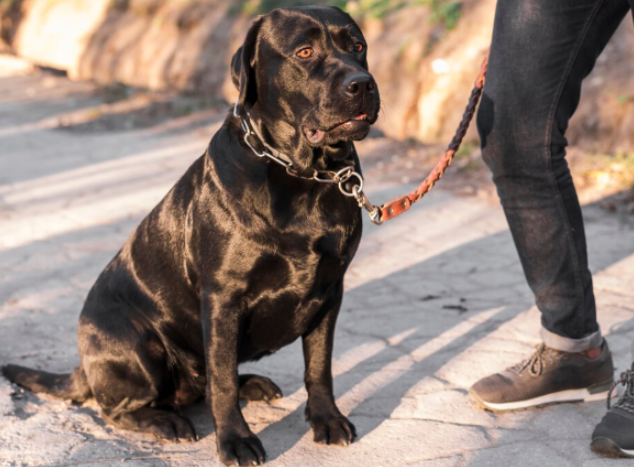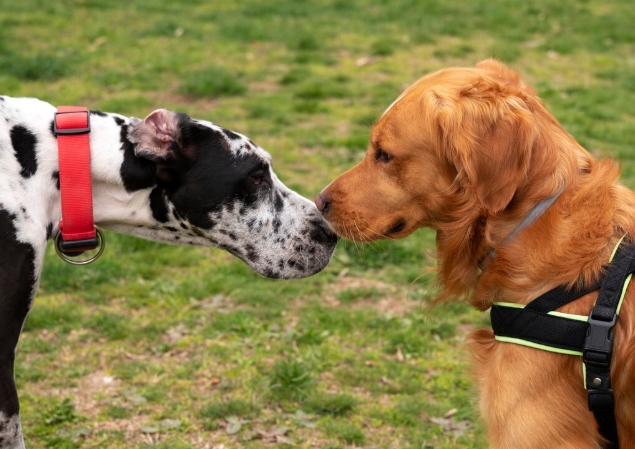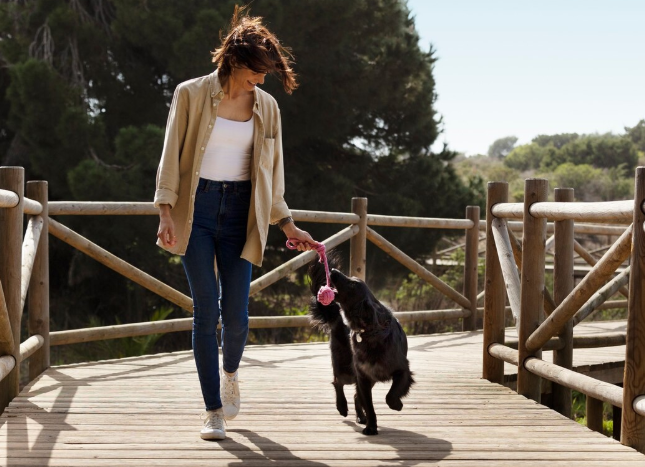2025-02-15
Playing, exercising, taking walks, or providing mentally stimulating toys—there are many ways to spend quality time with your furry friend. Taking your dog for a walk is probably the simplest and most common way to engage with them.
But what are you going to do when your dog suddenly stops and refuses to keep walking?
If you've ever experienced this, you might have felt frustrated or even a bit embarrassed. Don’t worry, though! Understanding the causes of this behavior can help you address it and prevent unpleasant situations on your next walk with your paw partner!
Let’s figure out why your dog might not want to walk and how to help them change their attitude towards the time you spend together outdoors!

Dogs are sensitive creatures that can easily feel overwhelmed by new environments, animals, unknown people, sounds, and smells. Needless to say that poorly socialized dogs or dogs with past traumatizing experiences are more vulnerable to stress in new situations. They might react with fear, anxiety, or even aggression as a defense mechanism. Your dog may stop walking, freeze, or pull back.
You should keep in mind that fearful dogs might display a strong reaction, including refusal to walk, even if they notice objects or stimuli, that you perceive as ‘normal’, e.g., passersby, traffic, motorcycles, other dogs walking by, etc.
If your dog is suddenly refusing to walk, this behavior might indicate fear or anxiety, and you should look for any triggers in their environment.
If your dog suddenly stops and appears uncomfortable, it could be a sign of pain or discomfort.
Injuries, wounds, or health conditions like arthritis can make walking uncomfortable or even painful! Older dogs or those with medical conditions are more likely to experience discomfort compared to young and healthy dogs, especially during more intensive walks.
If you have any concerns about your paw partner’s health, watch for additional signs indicating a health problem, i.e. limping, moving slowly, being unwilling to climb stairs or jump into the car. All of these can all indicate an underlying health issue.
A dog’s gear is just like human clothing—if it doesn’t fit, you don’t wear it (no need to follow today’s trends, though).
A harness, vest, collar or any type of gear you put on your dog should be suitable for their size and weight. Otherwise, it can cause discomfort, which may cause them to stop walking.
If your dog’s harness is too tight, it might rub their skin, while a loose harness could impede movement. Additionally, dogs with more sensitive necks or shoulders might also feel uncomfortable due to traditional collars.
It is important to regularly check if the equipment fits your furry friend and if they feel comfortable walking. Training gear should not cause any discomfort or pain.

Puppies who tend to be very energetic and easily get overly excited, as well as older dogs, who are not in their best shape, may get tired easily.
Too much excitement can quickly wear out a high-energy pup, while long walks may be too challenging for an older dog, especially one with mobility issues. In both cases, your paw friend will likely become fatigued at some point during the walk and may be reluctant to keep moving.
Furthermore, if you had an exciting play session just before your walk, don't be surprised if your pup sits down and wants you to carry them.
Dogs thrive on routine because it makes them feel secure. However, adding some variety can keep walks exciting for them!
If there’s nothing exciting about the walk such as treats, favorite toys, or new smells, they might just not be motivated to get moving. If your dog’s walks are too predictable and boring, they might lose interest and prefer to stay home.
Let’s start with one of the most important aspects of raising and training a dog:
Whether you have welcomed a new paw friend into your home, embarked on a training journey, or simply want to provide your dog with the opportunity to live their best life filled with confidence, socialization is key!
Socialization is essential to teach your furry friend how to handle new situations and experiences calmly and without fear. It also greatly helps dogs build confidence as they get to know the world around them.
The earlier you begin socializing your dog and exposing them to various stimuli (other dogs, people, environments) the sooner they will learn how to deal with them.

These two terms are widely used in dog training, and there is a simple reason for that- their effectiveness!
Gradually exposing your dog to new experiences, people, and other dogs (in a controlled and positive way) can reduce their anxiety over time. For training to succeed, you should start with calm, positive interactions in an environment without distractions, e.g. a quiet room. You need to ensure your dog remains calm in a low-stress environment before progressing to busier places.
The goal is to help your dog feel comfortable and relaxed around different sights, sounds, and situations, so they are more confident during your walks.
While desensitization is the process of gradual exposure starting at a low level of intensity, counter-conditioning is the process of rewarding the dog when remaining calm in the presence of the stimuli. If your paw friend is food-motivated, pick up their favorite treats and use them as rewards to encourage calm behavior. Please remember that you should not reward your dog if they are anxious or stressed, as this could have the opposite effect.
If your furry friend prefers toys or has other motivators, use them to encourage the wanted behavior, namely being calm in the presence of stimuli. Don't forget to praise and pet them to show how proud you are of their behavior!
Counter-conditioning can be perceived as a form of positive reinforcement because it uses positive outcomes like food, toys, praise, or petting to change a dog’s attitude and emotional response to stimuli.
However, positive reinforcement is not only used to change a dog’s attitude, but to encourage a specific behavior. When your dog receives a reward every time they display a wanted behavior or perform a task, they are more likely to repeat it in the future.
Along with teaching commands, positive reinforcement also helps strengthen the bond between handlers and their dogs and fosters trust and mutual understanding.
Make sure your dog’s gear, especially collar or harness/vest, fits well and does not cause them any pain or discomfort. When choosing training gear, ensuring the right fit is key!
It should sit securely without being too tight or too loose, allowing your paw friend to move comfortably. If your dog seems resistant to wearing their current equipment, you may consider exploring other options, such as a front-clip harness for better control.
Try making it a habit to regularly check your dog's gear—sometimes, a small adjustment can make a big difference and encourage them to keep walking.

You do not need to come up with some extraordinary ideas to keep your paw friend entertained.
Sometimes, it is the simple things that make a big difference! Bringing along your doggo’s favorite treats or toys, playing games like tug-of-war, or even just letting them sniff around (while you keep an eye on them outdoors) can make your walk more exciting and even turn them into adventures!
Remember, walks are more than just a chance for your dog to go potty- they’re an opportunity for your furry friend to explore, bond with you, and enjoy new experiences. Making your strolls more engaging and exciting can keep them physically and mentally stimulated, and reduce the likelihood of them stopping during walks.
If you notice your canine seems tired or overstimulated, give them time to rest and recharge.
Shorter walks, or more frequent breaks can make the experience more manageable for them, especially if they are seniors or young pups. On hot days or in unfamiliar areas, provide opportunities for them to sit, relax, and drink fresh water.
Providing breaks will help prevent your dog from becoming overwhelmed or exhausted. If they have mobility issues, adjust the pace and length of walks to suit their needs.